Lo-fi beats are super popular right now, that’s a fact.
They’re known for mellow vibes, nostalgic feel, and that signature warm, vintage sound 一 it’s all about bringing that chill vibe and authentic air to the table.
As music producers (especially lo-fi producers), knowing the keys to making lo-fi beats can completely enhance your appeal and skills in the process.
Luckily, I’m breaking down everything you need to know about making lo-fi beats, like:
- Choosing the perfect lo-fi tempo & groove ✓
- Laying down your lo-fi drum patterns ✓
- Creating nostalgic/chill chord progressions ✓
- Adding smooth, deep bass lines for chill beats ✓
- Incorporating melodic & atmospheric samples ✓
- Designing captivating textures & ambient layers ✓
- Arranging your lo-fi track for maximum chill ✓
- Applying creative effects & processing ✓
- Mixing & mastering your lo-fi tracks like a pro ✓
- Much more about making lo-fi beats ✓
After this ultimate step-by-step guide, you’ll know exactly how to knock out lo-fi beats that resonate with listeners and stand out in the genre.
Plus, you’ll be able to successfully create, mix, and master tracks that embody that authentic lo-fi sound.
This way, your lo-fi tracks will always be on point, professional, and authentic (talk about dominating the competition).
Table of Contents
- Unison Free LoFi Sample Pack: The Key to Authentic LoFi Beats
- Making LoFi Beats: Step-by-Step Guide
- Step 1: Choosing the Perfect LoFi Tempo & Groove
- Step 2: Laying Down Your LoFi Drum Patterns
- Step 3: Creating Nostalgic/Chill Chord Progressions
- Step 4: Adding Smooth, Deep Bass lines
- Step 5: Incorporating Melodic & Atmospheric Samples
- Step 6: Designing Captivating Textures & Ambient Layers
- Step 7: Arranging Your LoFi Track for Maximum Chill
- Step 8: Applying Creative Effects & Processing
- Pro Tip: Using Zen Master (The Ultimate Free LoFi Plugin)
- Step 9: Mixing & Mastering Your LoFi Tracks Like a Pro
- Bonus: Advanced Tips, Tricks & Techniques
- Final Thoughts
Unison Free LoFi Sample Pack: The Key to Authentic LoFi Beats

Before we jump into the step-by-step guide on making LoFi beats, let’s make sure you have the right samples.
This is key to capturing that authentic lo-fi sound we’re all chasing.
This legendary free LoFi Sample Pack by Unison Audio is hands down the most impressive free pack in the game, created by industry pros specifically for lo-fi producers.
It contains over 60 professional-quality samples, including:
- Rich bass loops
- Vibey melodic loops complete with stems and MIDI files
- Dusty kicks
- Snappy snares
- Smooth claps
- Crisp hi-hats
- Textured percussion
- Soulful melodic one-shots
- Deep 808s
- Etc.
Literally everything you need to start creating lo-fi magic right now is right here.
Modeled after iconic lo-fi artists like J. Cole, A$AP Rocky, and Earl Sweatshirt, these samples will instantly elevate your beats.
They’ll give them that laid-back, nostalgic vibe that truly stands out from the pack.
Also, don’t forget about this legendary Lofi Drum Kit that can take your music production skills and your lofi music to the next level.
Remember, when you’re making lofi beats, you need people to listen and hear magic, not lame sounds 一 these two packs will kick things up a notch, guaranteed.
Making LoFi Beats: Step-by-Step Guide
Now that you’re set up with killer samples, let’s dive into the good stuff: everything you need to know about making LoFi beats, step-by-step. The following steps will ensure your tracks sound chill, professional, and authentic all day.
Step 1: Choosing the Perfect LoFi Tempo & Groove
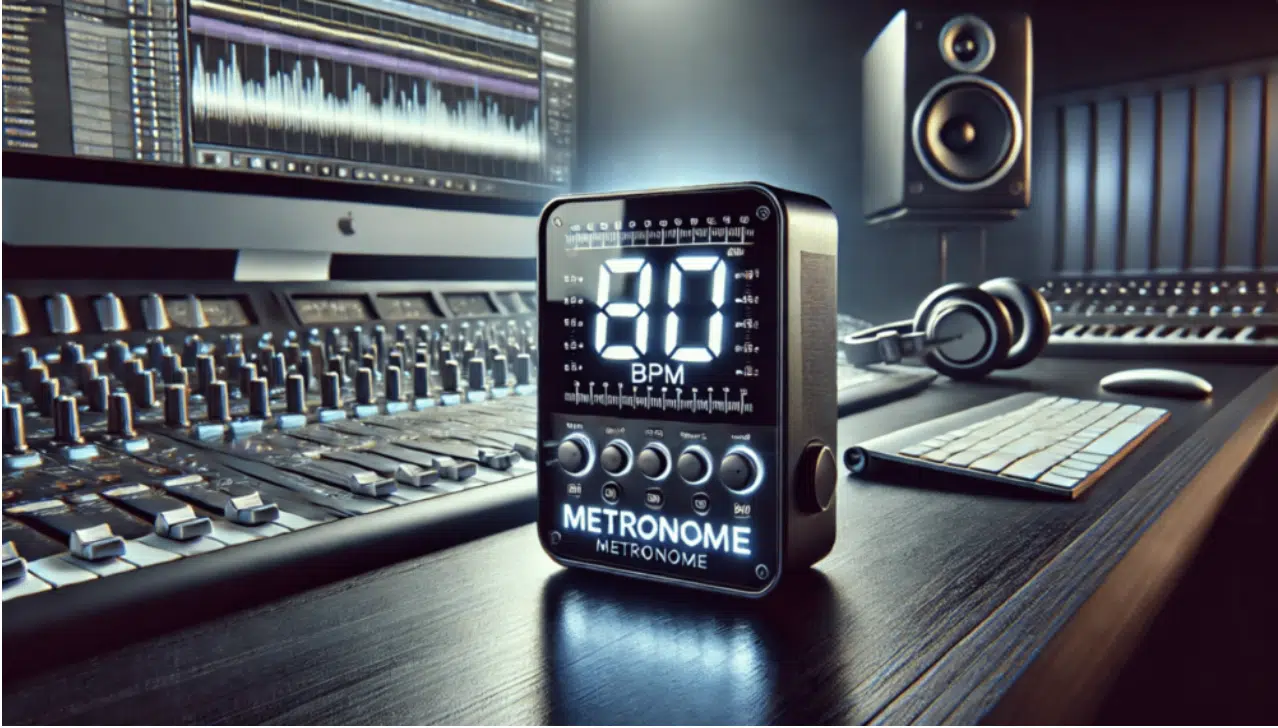
When making LoFi beats, setting the right tempo is one of the first and most important things you’ll do 一 it instantly defines the vibe and sets the mood of your entire track.
You’ll want to aim for between 60 and 90 BPM.
Personally, I find that a slow tempo around 70-80 BPM usually hits that sweet spot for a perfectly chill feel, but play around for yourself.
For example, if you’re going for that classic lo-fi hip-hop vibe reminiscent of tracks from artists like Nujabes or J Dilla, setting your digital audio workstation (like FL Studio) to exactly 75 BPM gives you plenty of room to play around with relaxed rhythms.
This is perfect for those chill beats/that signature lofi sound.
Now, groove-wise, adding a subtle swing is key to capturing an authentic lo-fi sound, preventing your drums from feeling stiff or overly robotic.
Start by applying around 10-15% swing in your DAW’s groove pool or swing quantization settings.
This gentle shuffle transforms a basic drum pattern into something instantly warmer and more organic.
Don’t just rely on automated swing though…
Manually shift your snare or hi-hats slightly off-grid (by a few milliseconds) to enhance that loose, humanized feel producers love about lo-fi beats.
Step 2: Laying Down Your LoFi Drum Patterns

When it comes to making LoFi beats, your drums set the heartbeat and overall groove, so getting this step right is key.
Start by selecting authentic LoFi drum samples.
I suggest you dive into the Unison Free LoFi Sample Pack mentioned earlier for its gritty kicks, soft claps, and dusty snares.
These sounds immediately inject that vintage vibe we’re chasing.
Try laying down a basic drum pattern first, something simple like placing your kick on beats 1 and 3, and the snare or clap hitting smoothly on beats 2 and 4.
Next, gently program your hi-hats to play eighth notes, but lower their velocity to around 60-70% 一 giving them a softer, less robotic feel.
I always recommend layering your snare or clap with a subtle vinyl crackle or percussion foley to add some texture and enhance the warm, nostalgic character of your drums.
Another trick is to slightly nudge certain drum hits (especially snares or secondary percussion) just a few milliseconds off-grid.
It will make your beat feel humanized and relaxed, as opposed to stiff and overly quantized, which you never, ever want.
Finally, use tape saturation or gentle distortion plugins, dialed subtly at around 15-20% wet, to further enhance that authentic LoFi drum texture.
Step 3: Creating Nostalgic/Chill Chord Progressions
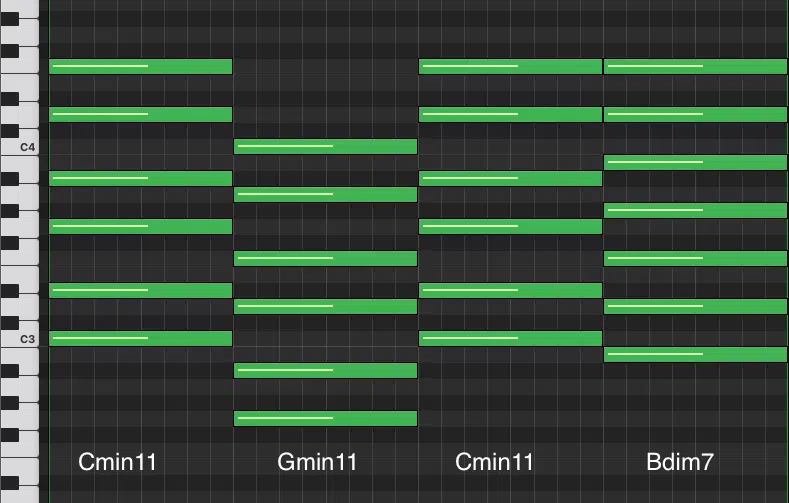
Once you’ve laid down a solid drum foundation, creating emotional and nostalgic chord progressions is the next step in making LoFi beats that truly stick with your listeners.
Remember, when you’re making lofi beats, focus on chords that naturally evoke chill and nostalgic emotions, like:
- Minor 7th chords
- Major 7th chords
- Suspended chords
These are true staples in the LoFi genre, so you’ll definitely want to get used to playing around with them.
For example, you might start with a progression like Dm7 – G7 – Cmaj7 – Am7 一 looping it gently for that introspective, relaxed feel major producers and artists love.
Also, to add vintage warmth, choose instruments like electric pianos, Rhodes, or sampled vintage keyboards.
Instruments like the Rhodes Mk I or classic Wurlitzer emulations work perfectly.
Don’t be afraid to slightly detune your keys by about 5-10 cents as this subtle pitch-shifting adds a dreamy, analog feel reminiscent of older tape machines.
I also suggest that you try layering chords with soft pads or ambient textures at low volume, then applying a generous but controlled amount of reverb with around a 1.5-2 second decay to create extra depth.
Lastly, try to experiment with modulation plugins as well (such as a subtle chorus set to 20-25% mix).
They can help make your chord progression feel alive and more immersive in order to fully capture that authentic LoFi vibe.
Step 4: Adding Smooth, Deep Bass lines
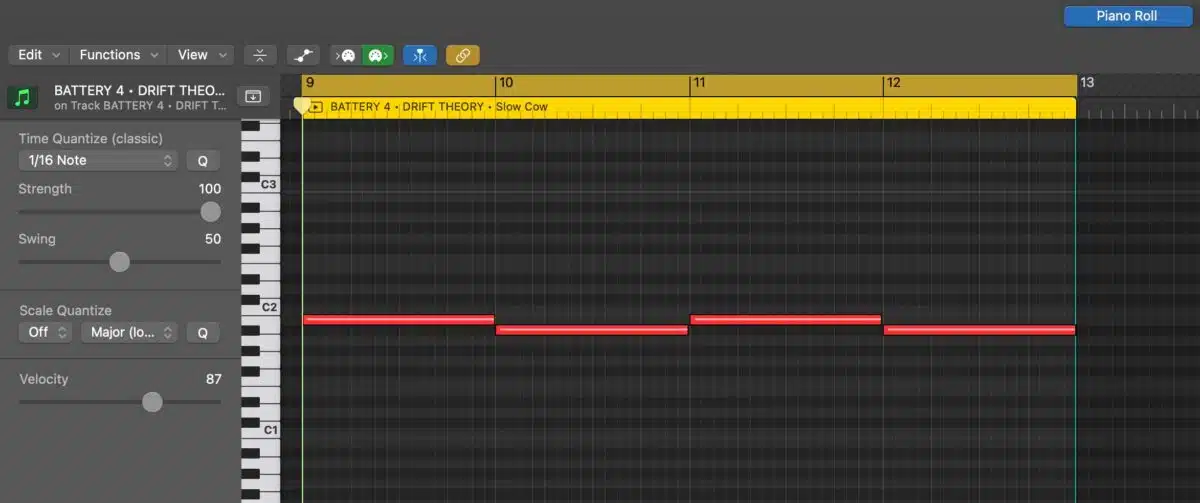
When creating LoFi beats, knocking out smooth and deep bass lines is super important for bringing that much-needed warmth and depth to the table.
I advise using mellow, round bass sounds such as a sine-wave sub bass or even a realistic upright bass sample because these naturally complement the laid-back vibe.
If your music production style is more along the lines of that lo-fi hip-hop vibe, this is great.
For example, load up a sine-wave bass patch in your favorite synth (like Serum or Massive) and set the low-pass filter cutoff around 120Hz.
This will help keep it smooth and unobtrusive like it always should be.
Also, when laying down the bassline, keep it simple and supportive 一 playing root notes along with occasional octave shifts every two bars usually fits beneath your chords.
For instance, if your chord progression is Dm7–G7–Cmaj7–Am7, your bassline might gently move through D–G–C–A, with subtle octave jumps on every fourth beat to add interest.
Another technique I usually apply is adding tape saturation, around 20% wet, to gently fatten the low end and give your bass a warm, vintage feel.
You could also try a subtle sidechain compression triggered by your kick drum.
Make sure to set the compressor’s threshold at about -18dB and a gentle ratio around 2:1 so the bass smoothly ducks without losing its laid-back energy.
Step 5: Incorporating Melodic & Atmospheric Samples
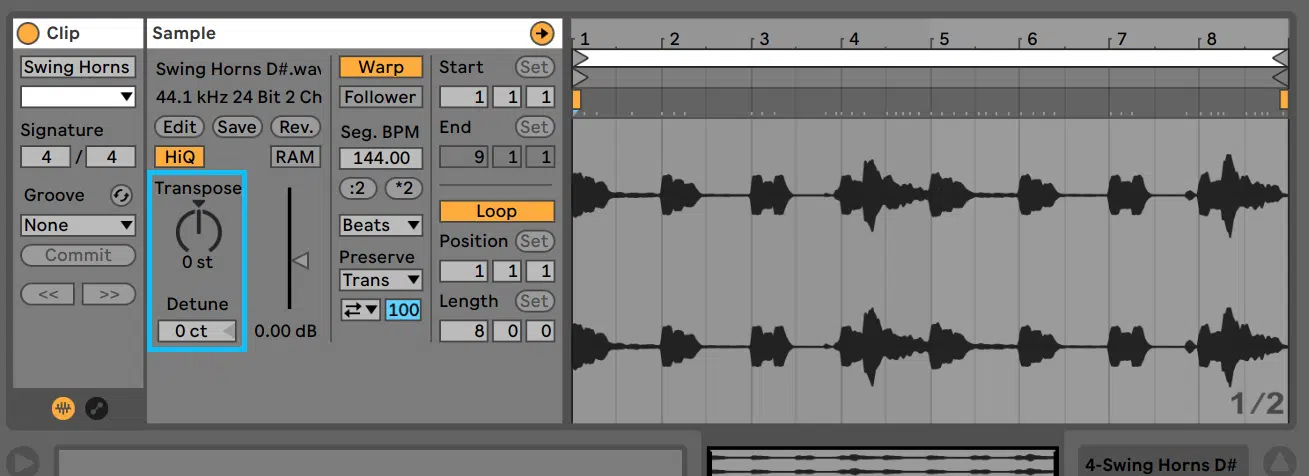
Throwing in melodic and atmospheric samples is one of my favorite ways to instantly capture that nostalgic, dreamy vibe when making LoFi beats.
As lofi beat producers, this is going to take things to the next level when it comes to professionalism and nailing down the right vibe.
When you’re making lofi beats, you should look for mellow loops with a vintage feel like instruments similar to:
- Rhodes electric pianos
- Soft jazz guitars
- Subtle vibraphones that naturally blend into a chill atmosphere
For example, you could grab a laid-back guitar loop recorded at around 75 BPM and slice it into smaller segments (like quarter-note or half-note sections) to rearrange them into fresh, unique melodies 一 this usually sounds good.
To deepen the emotional impact, I suggest layering these melodic chops with gentle ambient textures, such as vinyl crackle or soft rain noise.
Just make sure to keep their levels subtle around -18 to -22 dB so they hype up the mood without overwhelming your main melody.
NOTE: Applying a smooth reverb (around 2-3 seconds decay) with a high-cut filter at about 7 kHz can help these melodic samples sit warmly in your mix and create a more immersive environment.
Another trick I usually use, especially with lofi music/hip-hop music is adding a slight pitch modulation or detuning effect (around 5-10 cents).
This helps to mimic the imperfections of vintage recordings, and gives your track that authentic, analog feel LoFi music is famous for.
Step 6: Designing Captivating Textures & Ambient Layers

When making LoFi beats, designing atmospheric textures is key to immersing your listeners in that nostalgic, dreamy vibe that really gets them hooked.
You could start by layering subtle vinyl crackle beneath your drums 一 adjusting the volume around -25 dB to maintain warmth without overpowering your main beat.
And for depth purposes, try adding ambient rain or city street sounds gently panned around 20% left or right, mixed at roughly -30 dB.
This will widen your stereo image without cluttering the mix.
Incorporating soft tape hiss (filtered with a low-pass set around 6-8kHz) can also help emulate classic analog gear, reinforcing that vintage lo-fi feel.
Ambient pads with slow attack settings, around 1-2 seconds, and long release times, approximately 4 seconds, can fill the sonic space smoothly…
Just be careful not to exceed -18 dB in the mix, so your melodic elements remain clear and upfront, not drowned out or messy.
NOTE: For maximum impact, automate the volume or filter cutoff of your textures and pads subtly (just 2-3 dB changes over 8-12 bars).
Remember, when you create lofi music, this is the key to getting that gentle movement that keeps the ear engaged without becoming distracting.
These thoughtful textures, when balanced correctly, elevate your track’s overall atmosphere so it remains authentic yet uncluttered.
Step 7: Arranging Your LoFi Track for Maximum Chill
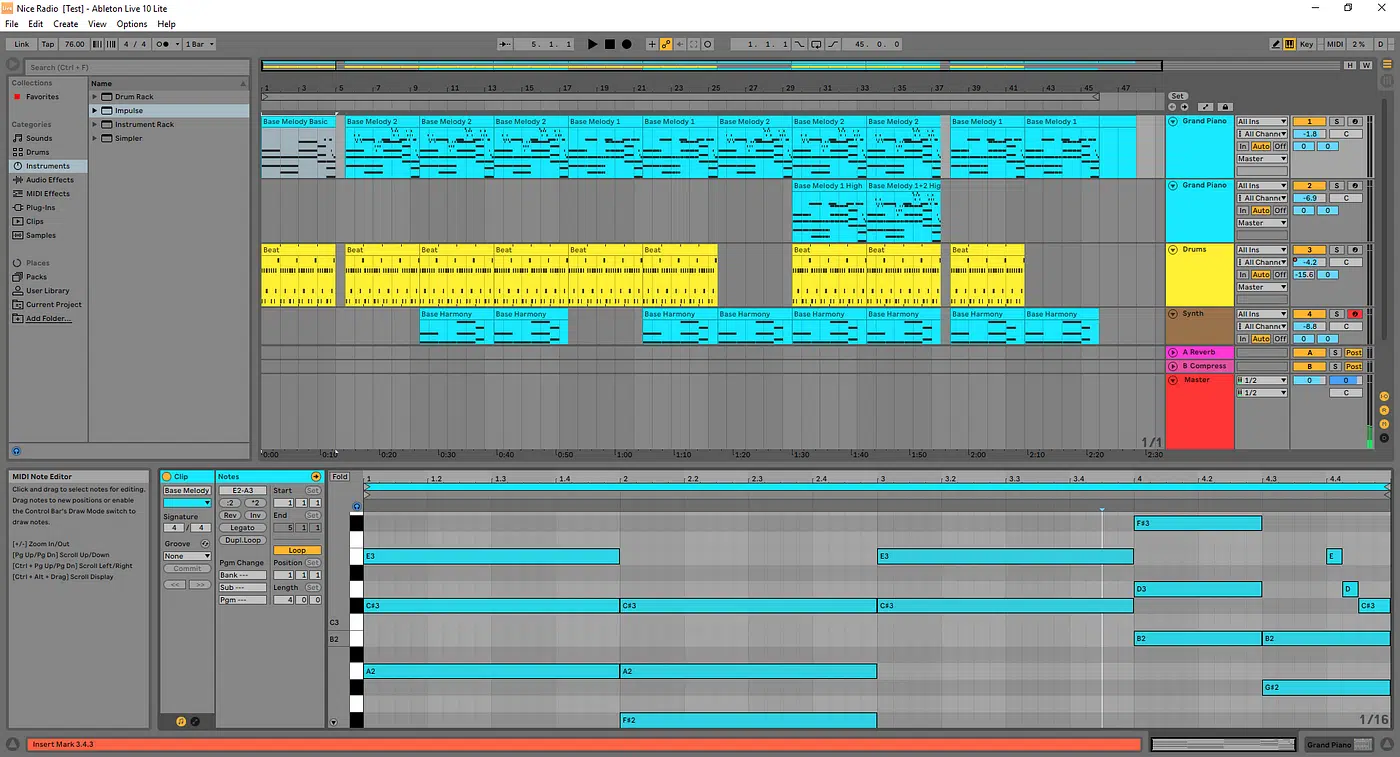
When it comes to making lofi beats, you have to create a smooth and captivating arrangement so your listeners are engaged from start to finish.
For that classic LoFi structure, you might start with a short 8-bar intro featuring drums and ambient textures, leading smoothly into a 16-bar verse section where you introduce:
- Chords
- Bass
- Melodic samples
After that, transition seamlessly into a simplified chorus (8-16 bars) by momentarily filtering down your drum beat or melodic elements.
Make sure to set your low-pass filter cutoff around 500 Hz for just 1-2 bars creates an engaging yet subtle shift.
Also, to keep listener interest, introduce minimalistic variations every 4-8 bars.
This could be slightly altering your hi-hat patterns, dropping certain drum hits temporarily, or gently automating effects like reverb mix by about 10-15%.
This under-used technique helps your arrangement flow naturally and preserves that chill LoFi atmosphere while making sure your audience stays fully engaged.
Step 8: Applying Creative Effects & Processing
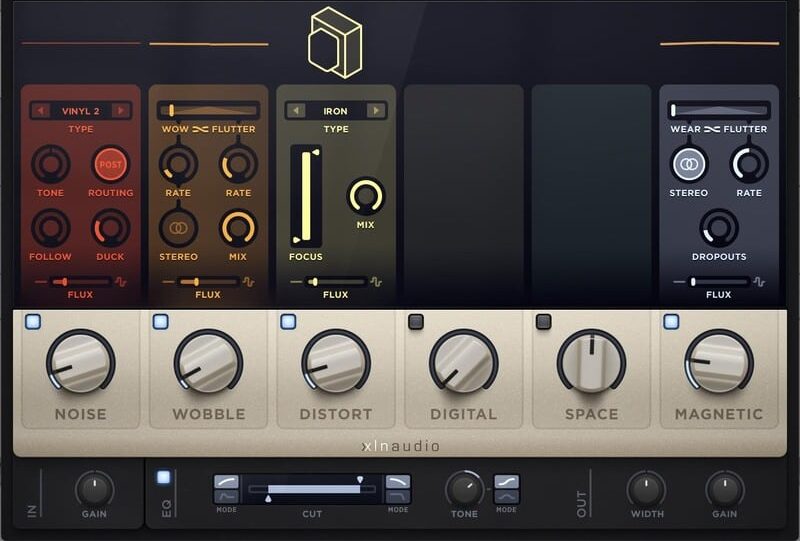
Applying the right creative effects is super important when making lofi beats as well because it helps your track capture that authentic lo-fi sound with a warm, vintage vibe.
Tape saturation is one of the most powerful tools, like we mentioned, so try running your drums and melodic elements through a tape emulator plugin like Zen Master.
Then, set the saturation knob around 25-30%, and adjust the “wow & flutter” to roughly 15% for subtle pitch drift.
Side note, bit reduction (bitcrushing) also adds character.
Sial in a subtle bitcrusher on hi-hats or percussion, using a depth setting around 8-12 bits to introduce digital distortion without killing any clarity.
To enhance the mellow mood, low-pass filtering is a go-to move.
So, set your filter around 4-6kHz on melodic samples or atmospheric pads 一 gently rolling off high frequencies to achieve a smooth, nostalgic lo-fi character.
Reverb and delay, applied lightly, also works some serious magic.
You’ll want to set your reverb decay around 2.5-3 seconds with a 20% wet mix on snare hits and melodic elements, and use a subtle analog-style delay plugin with feedback at about 25% and timing set to a dotted eighth note (1/8D) for additional groove.
Then there’s chorus, which should be placed after your instrument plugins, thickens textures beautifully.
Try a chorus with a depth of around 20% and rate at about 0.8Hz, which is perfect for creating that dreamy vintage sound.
Finally, intentionally embracing imperfections like slight pitch warbles or minor distortion artifacts will help your track feel organic/humanized.
It really brings that low fidelity charm at the heart of the lo-fi hip-hop genre to life.
Pro Tip: Using Zen Master (The Ultimate Free LoFi Plugin)
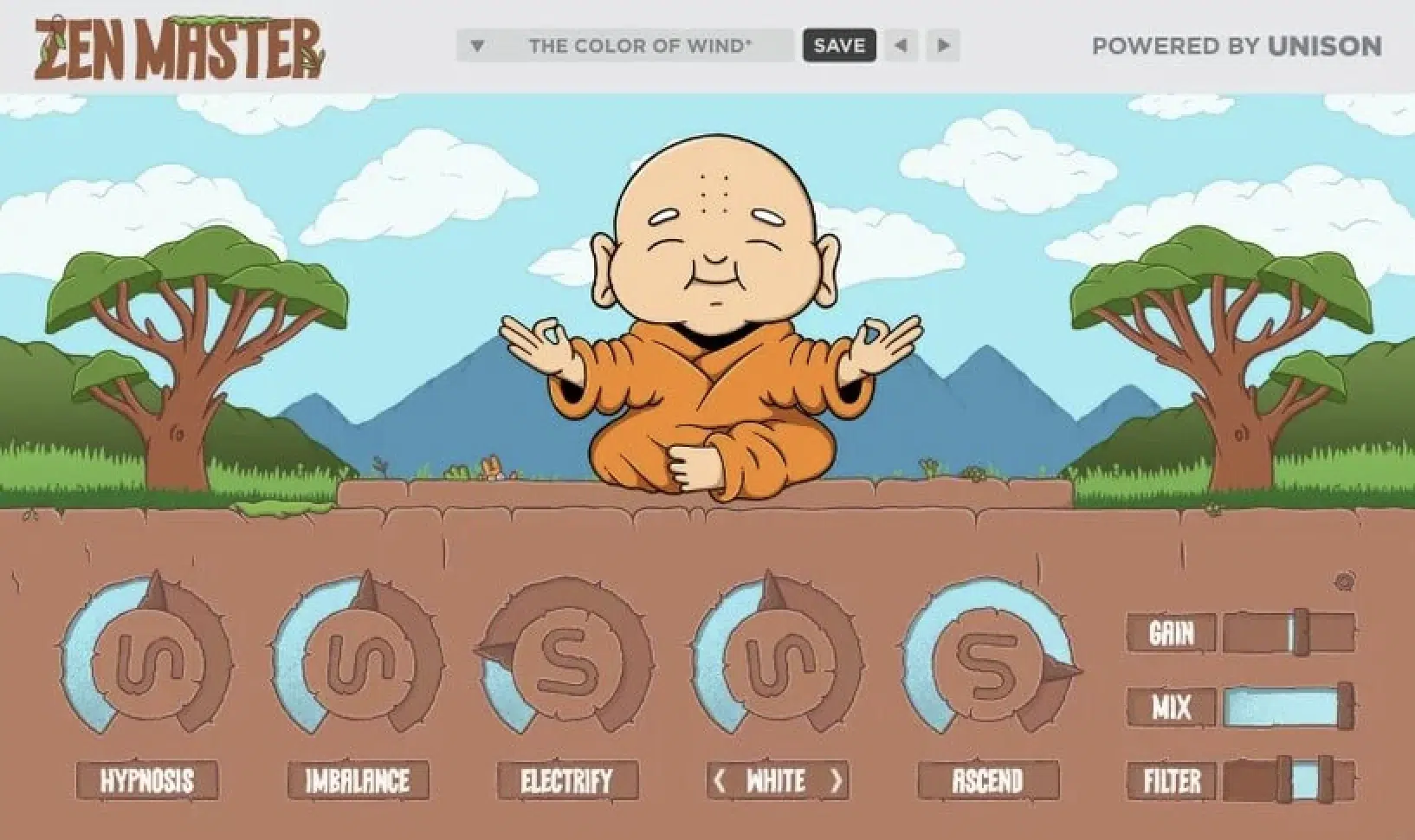
Before we jump into the 8th step, there’s a plugin you need to make it a lot smoother and more professional.
If you’re serious about making lofi beats, Zen Master by Unison Audio is one of those plugins that just makes everything easier and better.
It’s totally free, super lightweight, and gives you instant access to that warm, analog-style vibe without needing 10 different plugins stacked on top of each other.
You’ve got 5 simple knobs, and each one of them adds something unique to your sound:
- Hypnosis
- Imbalance
- Electrify
- Vinyl
- Ascend
Hypnosis lets you dial in that subtle pitch drift and stereo width, which is perfect for giving your melodic loops a lazy, wavy feel.
Imbalance gives your chords that classic tape wobble that just screams lofi music.
Next up we have Electrify that adds a bit of bit reduction (think crunchy hi-hats or textured synth layers), and the Vinyl knob adds built-in crackle, rain, or hiss textures.
Then there’s Ascend, which is basically a smooth, gluey reverb you can throw on anything without washing it out.
It ties perfectly into everything we’re going to cover in the next step as you’ll see.
Instead of loading up separate plugins for tape saturation, reverb, and vinyl crackle, Zen Master wraps it all into one epic, industry-renowned tool.
It’s super useful if you’re trying to move fast or want to test out different flavors on the fly without killing your CPU.
Bottom line, if you’re looking for a one-stop solution for dialing in that classic lo-fi sound while still keeping control over your mix, this one’s a no-brainer for making lofi beats.
Step 9: Mixing & Mastering Your LoFi Tracks Like a Pro
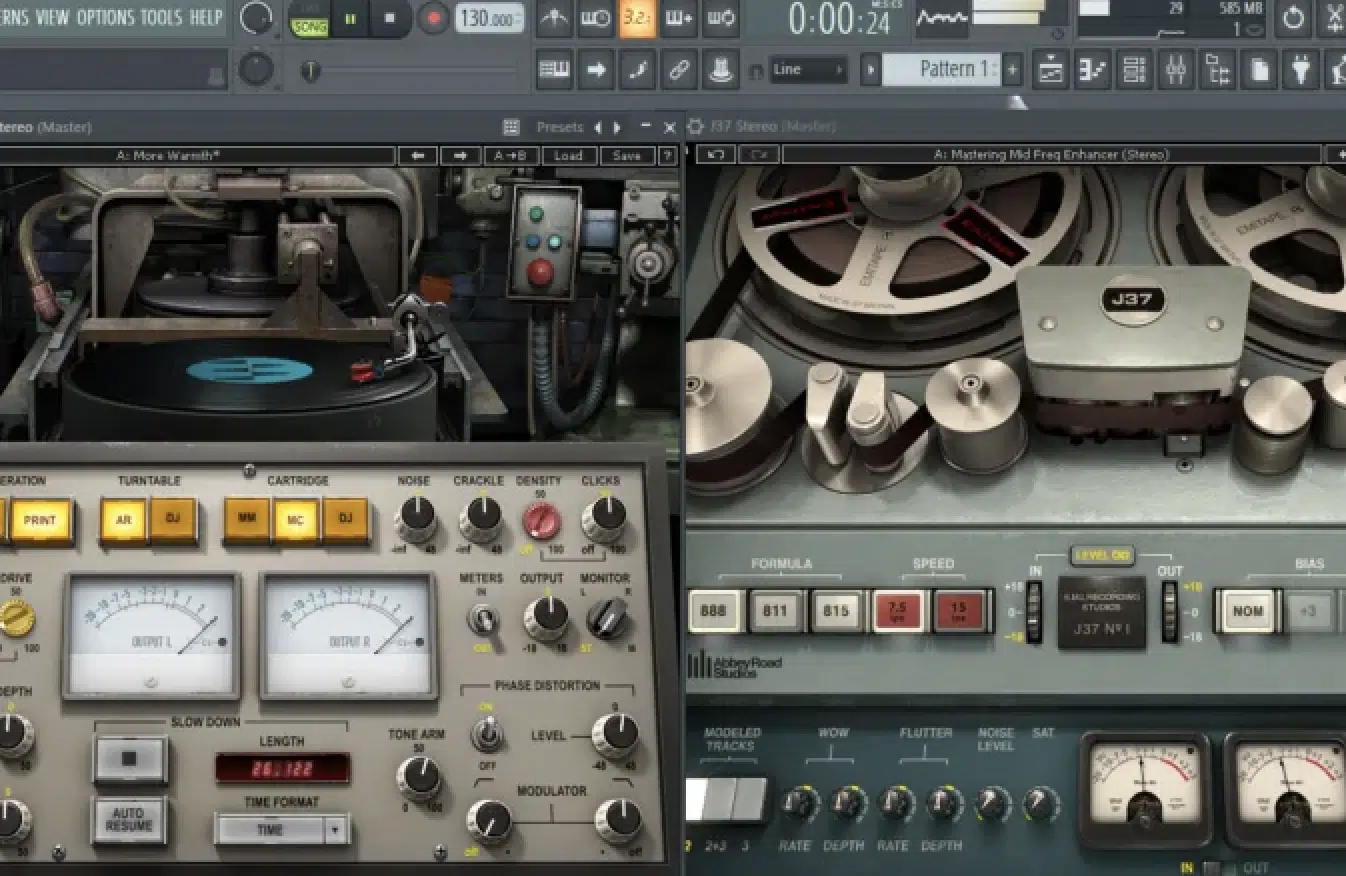
When making LoFi beats, your mixing and mastering process should be all about warmth, depth, and clarity without sacrificing that laid-back lo-fi vibe.
Start by balancing levels so your drums, particularly your kick drum and snare, sit comfortably in the mix at around -10 to -12 dB.
And keep in mind that your melodic loops and atmospheric elements should hover slightly lower around -15 dB.
EQ is super important as well, so apply gentle cuts around 300-500Hz (about 2-3 dB reduction) to remove muddiness from your chords or pads, and boost subtly around 80-100 Hz by about 2 dB to enhance bass warmth.
For some cohesive glue, try using a bus compressor on your master track and set a gentle ratio of about 2:1, with:
- Slow attack (30ms)
- Moderate release (150ms)
- And, aim for subtle gain reduction of just 1-2 dB to preserve dynamics
On your mastering chain, use a soft saturation plugin to warm up your overall track 一 adjusting drive to around 10-15% for subtle harmonic fullness.
And last but not least you’re going to want to apply a limiter, but tread lightly.
Set your ceiling at around -0.5 dB, targeting roughly -10 to -12 LUFS for optimal loudness that matches professional lo-fi tracks without losing the dynamics that define the beloved lofi sound/lofi vibe.
Bonus: Advanced Tips, Tricks & Techniques
Now that you know exactly how to create lo-fi music, let’s get into some more advanced music production techniques that will help you elevate your tracks even more. This will give them a distinctive, professional edge when you’re making lofi beats.
-
Advanced Sidechain & Ducking Techniques for Dynamic Movement
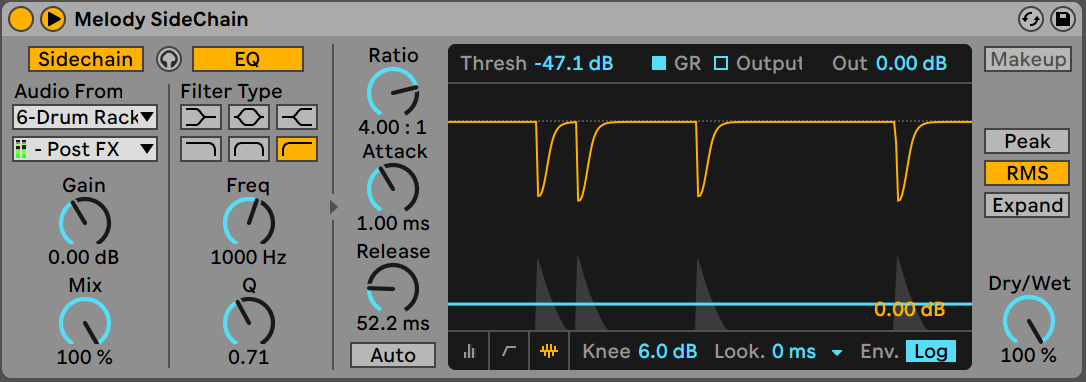
Beyond the traditional kick-ducking sidechain compression, you could play around by sidechaining atmospheric textures or melodic elements to your snare or hi-hats.
Set a subtle threshold around -20 dB and quick release around 60-80ms to create rhythmic breathing without being overly noticeable.
To enhance clarity, consider frequency-specific sidechain EQ, where only low frequencies (around 100-200Hz) duck slightly when the kick drum hits.
Just make sure to set the gain reduction to about -2 to -3 dB which usually works best here.
You could also automate a subtle ducking motion manually on melodic pads, lowering their volume around 1-2 dB for each downbeat.
It’ll give you that rhythmic energy and create a smoother groove overall.
These creative ducking setups add organic movement and emphasize groove 一 giving your lo-fi tracks a unique style many producers overlook.
-
Resampling & Granular Processing for Unique Textures
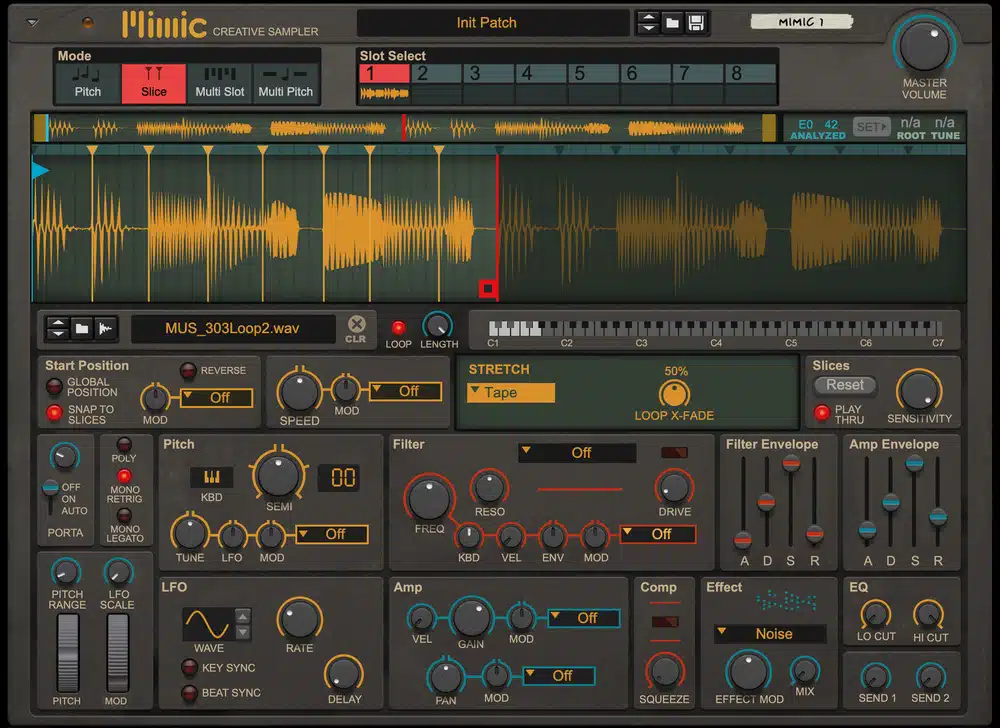
To create unique textures and evolving dreamy atmospheres when you’re making lofi beats, try resampling sections of your existing lo-fi beats or melodic loops.
You can do this by:
- Exporting a 4-bar loop
- Re-importing it into your sampler
- Then, slowing it down by 25-50% (pitching it down roughly 3-5 semitones for an instant vintage sound)
Also, granular synthesis plugins like Output’s Portal or Ableton’s Granulator II can transform your melodic samples into ambient pads.
So, you’ll want to set the grain size between 50-100 ms and density around 40% to generate rich, evolving textures.
Layer these newly resampled elements subtly beneath your main track at around -20 dB, gently automating their volume and panning for a complex, yet cohesive atmosphere.
This process will help you create lo-fi tracks full of character so it won’t be just another basic beat that gets overlooked.
-
Tape Emulation & Vintage Saturation Secrets
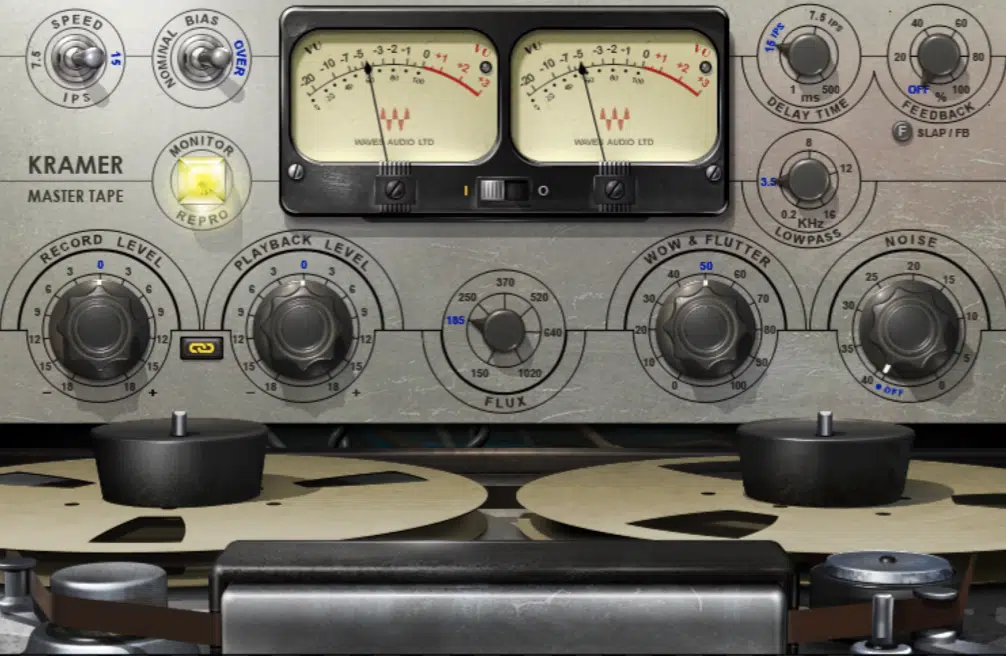
Mastering advanced tape emulation plugins, like Waves Kramer Tape, is essential to achieving that authentic lo-fi character when you’re making lofi beats.
Make sure to experiment with the Wow & Flutter settings around 15-20% intensity for a natural, subtle pitch modulation effect.
Also, remember that automating tape saturation parameters throughout your track adds evolving warmth and vintage imperfections…
Slowly modulate the saturation drive by about 5-10% every 8-16 bars for dynamic sonic interest that really keeps people hooked in.
Multi-stage saturation is also extremely powerful for lofi music.
For example, lightly saturate individual tracks first (around 10-15%), then add a gentle saturation plugin at roughly 5-10% on your master bus for cohesive analog warmth.
Using these tape emulation techniques will enrich your audio and bring your lo-fi songs that genuine, vintage sound listeners love to hear.
Final Thoughts
And there you go: everything you need to know about making lofi beats like a true boss.
By following all the steps broken down today, you’ll be able to create tracks that perfectly capture the chill, authentic vibe of classic lo-fi music.
Just make sure to apply the advanced production techniques shared here so your beats truly stand apart from typical lofi music.
This way, your tracks will always sound warm, captivating, and uniquely nostalgic.
Don’t forget to download the best Free LoFi Sample Pack in the game 一 it includes everything you need for making lofi beats that listeners will keep on repeat.
And remember, it’s all about embracing imperfections and subtle details, otherwise you’ll lose the essence of what makes lo-fi truly special.
Also, never be afraid to experiment creatively or play around with unconventional sounds because in the end, that’s what making lofi beats is all about.
Until next time…







Leave a Reply
You must belogged in to post a comment.